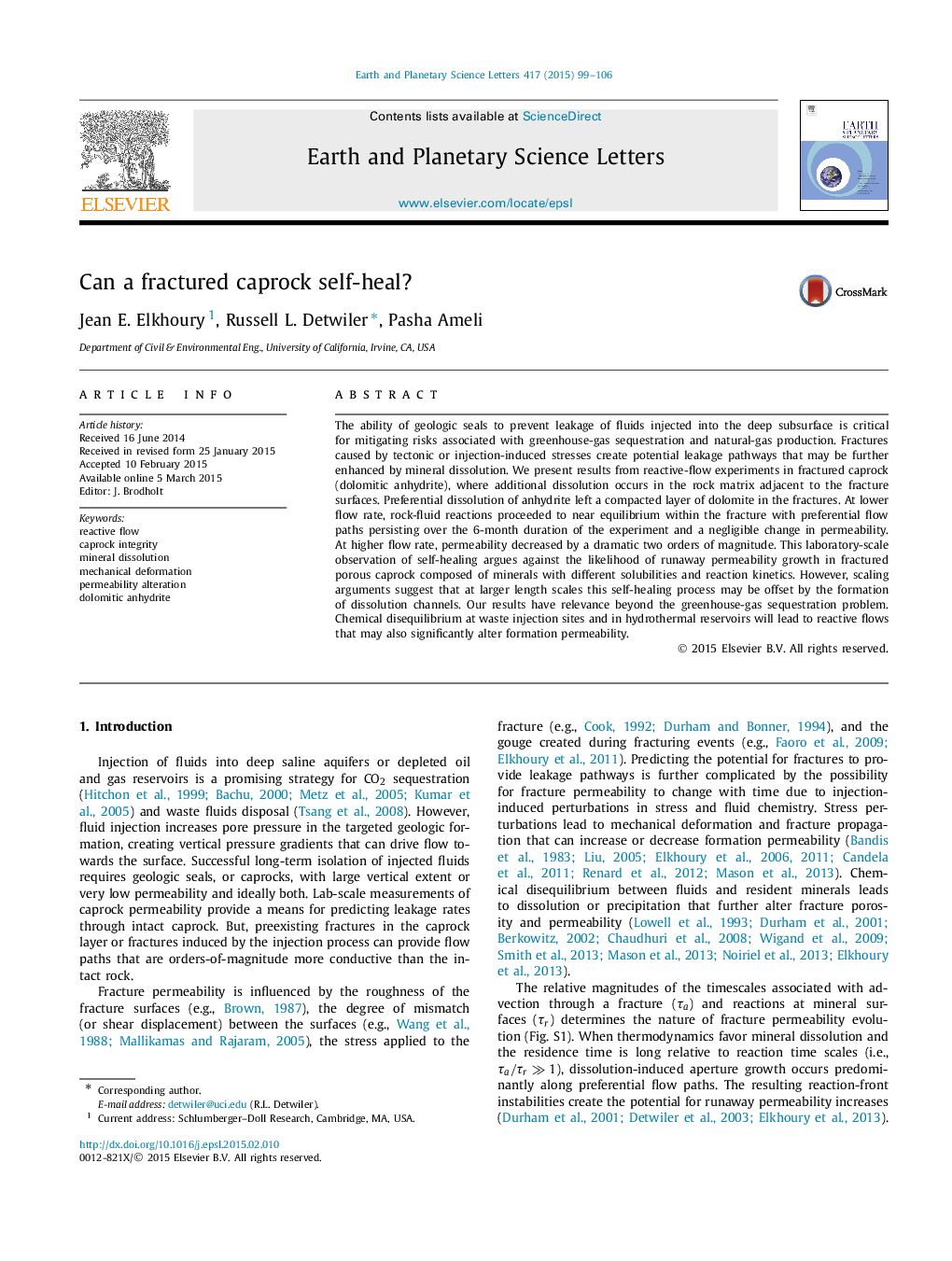| Article ID | Journal | Published Year | Pages | File Type |
|---|---|---|---|---|
| 6428389 | Earth and Planetary Science Letters | 2015 | 8 Pages |
â¢Flow rate controls dissolution-induced healing of fractured caprocks.â¢Anhydrite dissolves preferentially in dolomitic anhydrite caprocks.â¢Fractured caprocks may self-heal under high flow rates.â¢Fractured caprocks maintain persistent flow paths under low flow rates.
The ability of geologic seals to prevent leakage of fluids injected into the deep subsurface is critical for mitigating risks associated with greenhouse-gas sequestration and natural-gas production. Fractures caused by tectonic or injection-induced stresses create potential leakage pathways that may be further enhanced by mineral dissolution. We present results from reactive-flow experiments in fractured caprock (dolomitic anhydrite), where additional dissolution occurs in the rock matrix adjacent to the fracture surfaces. Preferential dissolution of anhydrite left a compacted layer of dolomite in the fractures. At lower flow rate, rock-fluid reactions proceeded to near equilibrium within the fracture with preferential flow paths persisting over the 6-month duration of the experiment and a negligible change in permeability. At higher flow rate, permeability decreased by a dramatic two orders of magnitude. This laboratory-scale observation of self-healing argues against the likelihood of runaway permeability growth in fractured porous caprock composed of minerals with different solubilities and reaction kinetics. However, scaling arguments suggest that at larger length scales this self-healing process may be offset by the formation of dissolution channels. Our results have relevance beyond the greenhouse-gas sequestration problem. Chemical disequilibrium at waste injection sites and in hydrothermal reservoirs will lead to reactive flows that may also significantly alter formation permeability.
